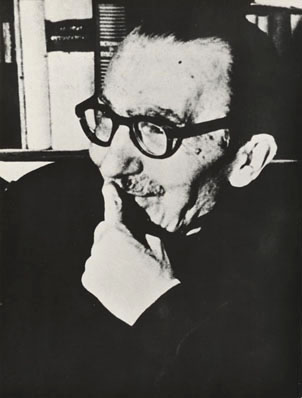Nikos Kazantzakis (Greek: Νίκος Καζαντζάκης 2 March (OS 18 February) 1883 – 26 October 1957) was a Greek writer. Widely considered a giant of modern Greek literature, he was nominated for the Nobel Prize in Literature in nine different years.
Kazantzakis’ novels included Zorba the Greek (published 1946 as Life and Times of Alexis Zorbas), Christ Recrucified (1948), Captain Michalis (1950, translated Freedom or Death), and The Last Temptation of Christ (1955). He also wrote plays, travel books, memoirs and philosophical essays such as The Saviors of God: Spiritual Exercises. His fame spread in the English-speaking world due to cinematic adaptations of Zorba the Greek (1964) and The Last Temptation of Christ (1988).
He translated also a number of notable works into Modern Greek, such as the Divine Comedy, Thus Spoke Zarathustra, On the Origins Of Species, the Iliad and the Odyssey.
Biography
When Kazantzakis was born in 1883 in Kandiye, now Heraklion, Crete had not yet joined the modern Greek state (which had been established in 1832), and was still under the rule of the Ottoman Empire. From 1902 to 1906 Kazantzakis studied law at the University of Athens: his 1906 Juris Doctor thesis title was Ο Φρειδερίκος Νίτσε εν τη φιλοσοφία του δικαίου και της πολιτείας (“Friedrich Nietzsche on the Philosophy of Law and the State”). Then he went to the Sorbonne in 1907 to study philosophy. There he fell under the influence of Henri Bergson. His 1909 doctoral dissertation at the Sorbonne was a reworked version of his 1906 dissertation under the title Friedrich Nietzsche dans la philosophie du droit et de la cité (“Friedrich Nietzsche on the Philosophy of Right and the State”). Upon his return to Greece, he began translating works of philosophy. In 1914 he met Angelos Sikelianos. Together they travelled for two years in places where Greek Orthodox Christian culture flourished, largely influenced by the enthusiastic nationalism of Sikelianos.
Kazantzakis married Galatea Alexiou in 1911; they divorced in 1926. He married Eleni Samiou in 1945. Between 1922 and his death in 1957, he sojourned in Paris and Berlin (from 1922 to 1924), Italy, Russia (in 1925), Spain (in 1932), and then later in Cyprus, Aegina, Egypt, Mount Sinai, Czechoslovakia, Nice (he later bought a villa in nearby Antibes, in the Old Town section near the famed seawall), China, and Japan.
While in Berlin, where the political situation was explosive, Kazantzakis discovered communism and became an admirer of Vladimir Lenin. He never became a committed communist, but visited the Soviet Union and stayed with the Left Opposition politician and writer Victor Serge. He witnessed the rise of Joseph Stalin, and became disillusioned with Soviet-style communism. Around this time, his earlier nationalist beliefs were gradually replaced by a more universalist ideology. As a journalist in 1926 he got interviews from Miguel Primo de Rivera and the Italian dictator Benito Mussolini.
The 50th anniversary of the death of Nikos Kazantzakis was selected as main motif for a high-value euro collectors’ coin; the €10 Greek Nikos Kazantzakis commemorative coin, minted in 2007. His image is on the obverse of the coin, while the reverse carries the National Emblem of Greece with his signature.
Death
During WWII he was in Athens and translated the Iliad, together with the philologist Ioannis Kakridis. In 1945, he became the leader of a small party on the non-communist left, and entered the Greek government as Minister without Portfolio. He resigned this post the following year. In 1946, The Society of Greek Writers recommended that Kazantzakis and Angelos Sikelianos be awarded the Nobel Prize for Literature. In 1957, he lost the Prize to Albert Camus by one vote. Camus later said that Kazantzakis deserved the honour “a hundred times more” than himself. In total Kazantzakis was nominated in nine different years. Late in 1957, even though suffering from leukemia, he set out on one last trip to China and Japan. Falling ill on his return flight, he was transferred to Freiburg, Germany, where he died. He is buried at the highest point of the Walls of Heraklion, the Martinengo Bastion, looking out over the mountains and sea of Crete. His epitaph reads “I hope for nothing. I fear nothing. I am free.” (Δεν ελπίζω τίποτα. Δε φοβούμαι τίποτα. Είμαι λέφτερος.) Kazantzakis developed this famously pithy phrasing of the philosophical ideal of cynicism, which dates back to at least the second century AD.
Read More : Wikipedia
